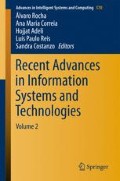Abstract
Dyscalculia is a particular learning disability that affects around 6% of the world population. However, dyscalculics are not brainless; they fight to learn mathematics, notwithstanding nurturing an acceptable education environment at home and school. Indeed, dyscalculic children fall behind early in primary school, and may develop anxiety or a strong dislike of mathematics. When reach adult life are still paid less than ordinary people and have difficulties on handling their ordinary finances. Therefore, this work is about a game; disMAT, which is an app whose purpose entails to appeal children to train their mathematical skills. disMAT involves planning by choosing strategies for change as kids move through the game. Unlike a whole-class mathematics activity, a game may support one’s child’s individual needs. Undeniably, it must be challenging, have rules and structure, include a clear ending point, and focus on specific abilities.
Access this chapter
Tax calculation will be finalised at checkout
Purchases are for personal use only
Notes
- 1.
Acalculia can be included in this stage.
- 2.
An activity is an application component that provides a screen with which users can interact in order to do something.
References
Ferraz, F.T.: Sistema de Apoio à Aprendizagem na Área da Discalculia em Menores. http://hdl.handle.net/1822/40865
Binder, M.D., Hirokawa, N., Windhorst, U. (eds.): Encyclopedia of Neuroscience, pp. 929–1027. Springer, Berlin (2009)
Kosc, L.: Developmental Dyscalculia. J. Learn. Disabil. 7, 164–177 (1974)
Kuhl, D.E.: Voices Count: Employing A Critical Narrative Research Bricolage For Insights Into Dyscalculia. http://ir.lib.uwo.ca/cgi/viewcontent.cgi?article=3612&context=etd
Romagnoli, G.: Dyscalculia: A Challenge in Mathematics. CRDA, São Paulo (2008)
Ansari, D.: The neural roots of mathematical expertise. Proc. Nat. Acad. Sci. USA 113, 4887–4889 (2016)
Bartés-Serrallonga, M., Serra-Grabulosa, J.M., Adan, A., Falcón, C., Bargalló, N., Solé-Casals J.: Smoothing FMRI data using an adaptive Wiener filter. In: Madani, K., Correia, A.D., Rosa, A., Filipe, J. (eds.) Computational Intelligence. Studies in Computational Intelligence, vol. 577, pp. 321–332. Springer, Cham (2015)
Carpenter, D.M., Ledbetter, C., Moore, A.L.: LearningRx cognitive training effects in children ages 8–14: a randomized controlled trial. Appl. Cogn. Psychol. 30, 815–826 (2016)
Rubio, G., Navarro, E., Montero, F.: APADYT: a multimedia application for SEN learners. Multimedia Tools Appl. 71, 1771–1802 (2014)
Merkley, R., Ansari, D.: Why numerical symbols count in the development of mathematical skills: evidence from brain and behavior. Curr. Opin. Behav. Sci. 10, 14–20 (2016)
Johnson, D.J., Myklebust, H.R.: Learning Disabilities: Educational Principles and Practices. Pro-Ed, Austin (1967)
Ansari, D., Lyons, I.M.: Cognitive neuroscience and mathematics learning: how far have we come? Where do we need to go? ZDM Math. Educ. 48, 379–383 (2016)
Howard-Jones, P.A., Varma, S., Ansari, D., Butterworth, B., De Smedt, B., Goswami, U., Laurillard, D., Thomas, M.S.: The principles and practices of educational neuroscience: commentary on bowers. Psychol. Rev. 123, 620–627 (2016)
Berch, D., Mazzocco, M.: Why Is Math So Hard for Some Children? The Nature and Origins of Mathematical Learning Difficulties and Disabilities. Paul H. Brookes Publishing Co., Baltimore (2007)
Ferraz, F., Neves, J.: A brief look into dyscalculia and supportive tools. In: Proceedings of the 5th IEEE International Conference on E-Health and Bioengineering (EHB 2015), pp. 1–4 (2015). IEEE Edition
Rubinsten, O., Henik, A.: Developmental dyscalculia: heterogeneity might not mean different mechanisms. Trends Cogn. Sci. 13, 92–99 (2008)
Hay, G.J., Castilla, G.: Object-based image analysis: Strengths, Weaknesses, Opportunities and Threats (SWOT). In: Proceedings of 1st International Conference on Object-Based Image Analysis (OBIA 2006), p. 3 (2006)
Acknowledgments
This work has been supported by COMPETE: POCI-01-0145-FEDER-007043 and FCT – Fundação para a Ciência e Tecnologia within the Project Scope: UID/CEC/00319/2013.
Author information
Authors and Affiliations
Corresponding author
Editor information
Editors and Affiliations
Rights and permissions
Copyright information
© 2017 Springer International Publishing AG
About this paper
Cite this paper
Ferraz, F., Costa, A., Alves, V., Vicente, H., Neves, J., Neves, J. (2017). Gaming in Dyscalculia: A Review on disMAT . In: Rocha, Á., Correia, A., Adeli, H., Reis, L., Costanzo, S. (eds) Recent Advances in Information Systems and Technologies. WorldCIST 2017. Advances in Intelligent Systems and Computing, vol 570. Springer, Cham. https://doi.org/10.1007/978-3-319-56538-5_25
Download citation
DOI: https://doi.org/10.1007/978-3-319-56538-5_25
Published:
Publisher Name: Springer, Cham
Print ISBN: 978-3-319-56537-8
Online ISBN: 978-3-319-56538-5
eBook Packages: EngineeringEngineering (R0)

